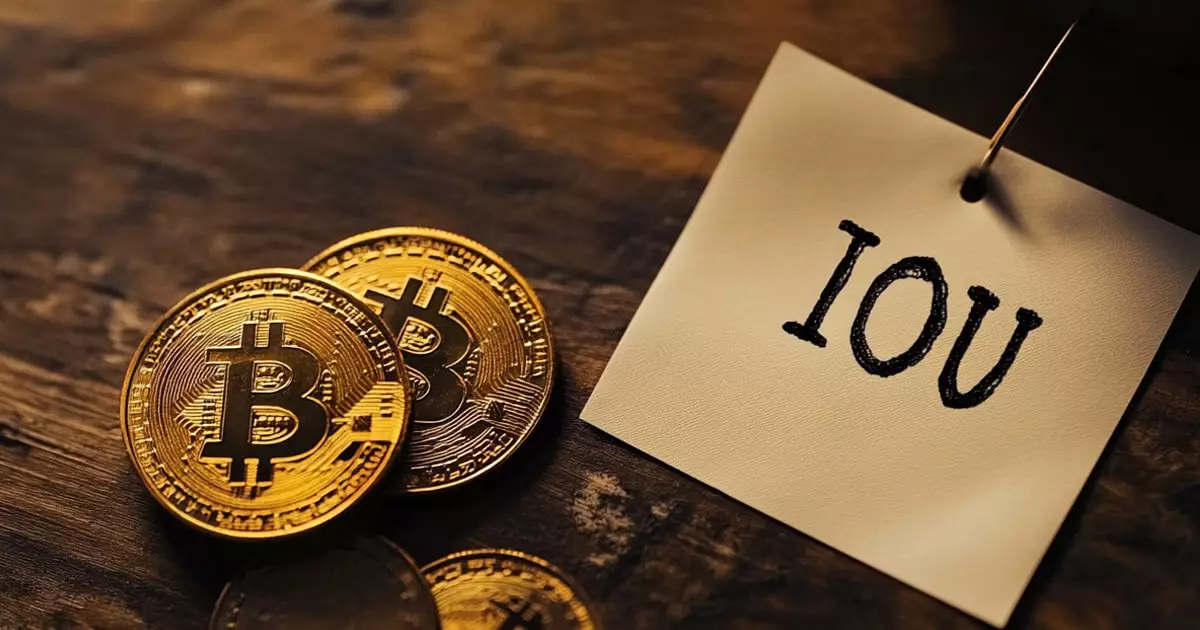In the cryptocurrency space, rumors can often spiral into significant controversies, as evidenced by the recent allegations directed towards Coinbase. These claims, which surfaced on social media platforms on September 16, suggested that Coinbase was manipulating Bitcoin’s price by issuing letters of debt instead of using actual Bitcoin to back its new ETF, the IBIT. Such allegations not only place a shadow on Coinbase’s reputation but also reflect underlying tensions in the market, particularly among Bitcoin investors who may be feeling the pressure of a prolonged downturn in Bitcoin prices since March.
Senior ETF analyst Eric Balchunas publicly dismissed these claims, asserting the absurdity of the allegations. He emphasized that BlackRock, a substantial and influential asset manager, does not engage in casual dealings and would be significantly perturbed by any misconduct involving their funds. The seriousness of these statements cannot be understated, as Balchunas has a well-established expertise in the field, and his insights should prompt a closer examination of the allegations against Coinbase.
Coinbase CEO Brian Armstrong has also sought to clarify the situation by detailing how the firm operates concerning its institutional clients. He stated that all transactions related to the ETFs held in Coinbase’s custody are ultimately settled on-chain. This statement highlights the company’s commitment to transparency and regulatory compliance. Armstrong explained that institutional clients can opt for over-the-counter (OTC) desk trading before settling on-chain, ensuring that funds remain secure in Coinbase Prime vaults within a business day.
Armstrong’s remarks underline a crucial point in the cryptocurrency ecosystem concerning institutional investment dynamics. By ensuring that institutional funds are not exposed to unnecessary volatility or transaction risks, Coinbase positions itself as a secure and reliable platform for serious investors. Yet, the need for such explanations illustrates the pressure firms like Coinbase face in maintaining their credibility amidst a skeptical market.
Balchunas pointed to two primary reasons this theory gained traction among the investor community. Primarily, there exists a psychological aspect where investors often look for external scapegoats for market downturns rather than reflecting on their own positions. The ongoing downtrend of Bitcoin might encourage investors to speculate about conspiracy theories rather than acknowledging broader market dynamics.
The second point Balchunas made ties into a broader skepticism prevalent in the crypto community towards institutions and government practices. This skepticism is reminiscent of historical complaints surrounding gold ETFs, with long-time gold investors often deriding these financial products as “paper gold.” The parallels drawn between Bitcoin and gold show how deeply entrenched this sentiment is among proponents of cryptocurrencies, who champion the asset for its supposed independence from centralized financial systems.
In the wake of these recent discussions, Coinbase launched a synthetic Bitcoin product, cbBTC, which quickly garnered attention and criticism, having reached a market cap of over $100 million on its first day. The reactions were swift, with notable figures like Tron founder Justin Sun dismissing cbBTC as lacking transparency and effectively being a “trust me” product. This scrutiny reflects broader community concerns about the potential centralization of Bitcoin and its custodial frameworks.
Coinbase’s response to criticisms centered on the necessity of trusting a centralized custodian to ensure the security of the assets backing these products. While trust is an integral part of any financial relationship, the lack of proof of reserves for cbBTC raises valid concerns about the tethering of digital assets to centralized entities, causing a rift within a community characterized by its anti-establishment ethos.
Ultimately, the essence of the Coinbase allegations lies beyond a mere exchange of accusations; it is indicative of the complex interplay between trust, regulation, and institutional presence in the cryptocurrency landscape. As the market continues to evolve, it is vital for exchanges and investment products to maintain transparency and clarity in their operations, reassuring investors that their interests are safeguarded amidst rising skepticism. The path forward will require a balanced approach that fosters both innovation and accountability to ensure that cryptocurrencies can mature into a resilient component of the global financial system.

